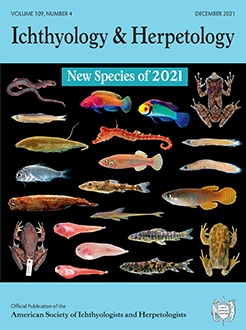REVIEWS (1)
ARTICLES (13)
POINTS OF VIEW (1)
OBITUARIES (2)
BOOK REVIEWS (1)
VOLUME CONTENTS (1)

Insight into the Evolution of Anuran Foot Flag Displays: A Comparative Study of Color and Kinematics
No abstract available
No abstract available
No abstract available
No abstract available
No abstract available
No abstract available
No abstract available
No abstract available
No abstract available
No abstract available
No abstract available
